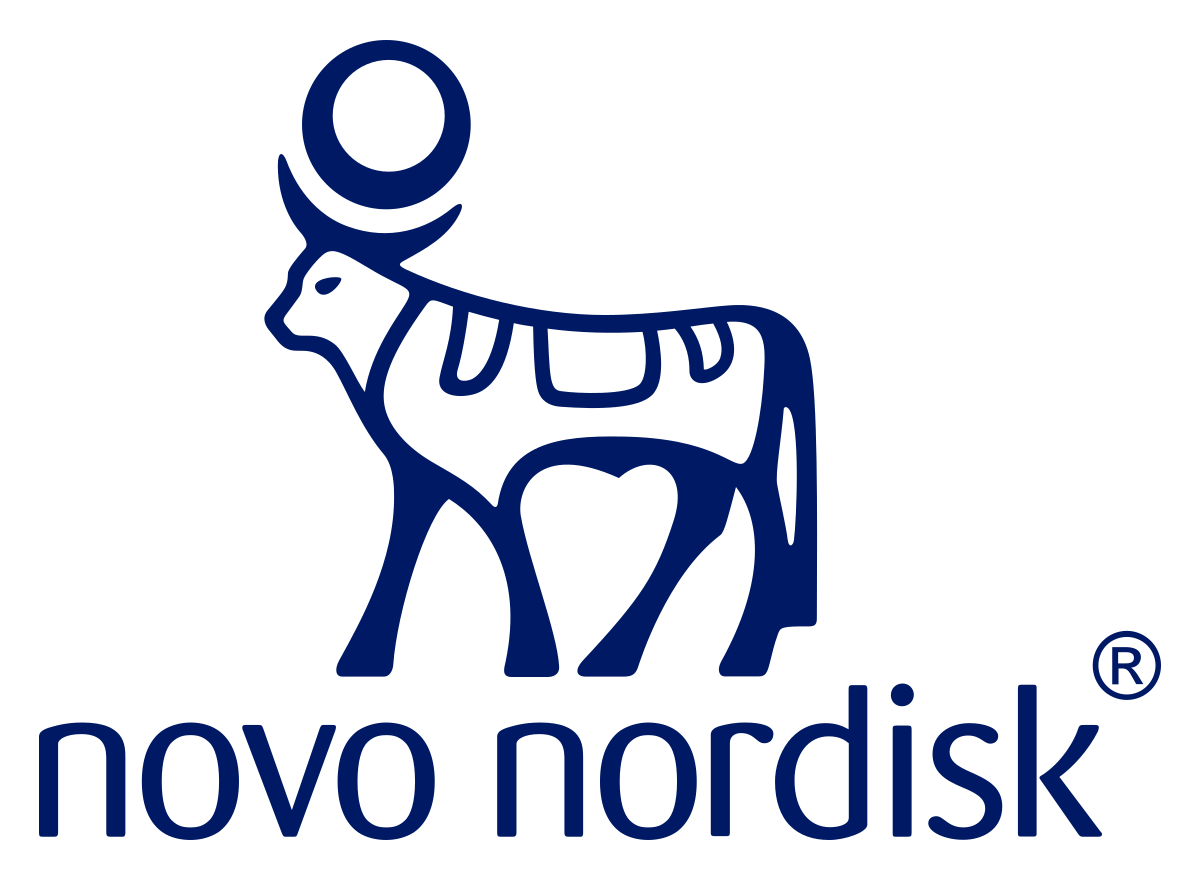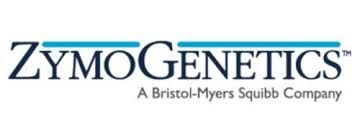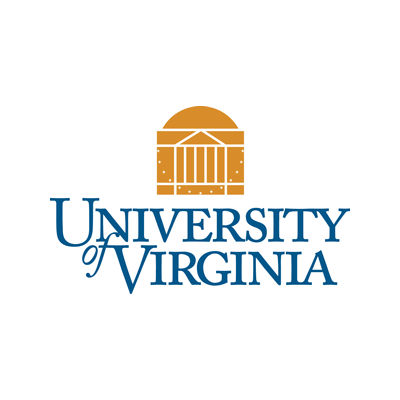预约演示
更新于:2025-10-26
Glucagon Hydrochloride (Novo Nordisk)
人高血糖素 (Novo Nordisk)
更新于:2025-10-26
概要
基本信息
原研机构 |
非在研机构 |
最高研发阶段批准上市 |
首次获批日期 日本 (1996-01-31), |
最高研发阶段(中国)批准上市 |
特殊审评- |
登录后查看时间轴
结构/序列
Sequence Code 27581

关联
3
项与 人高血糖素 (Novo Nordisk) 相关的临床试验NCT06588504
A Phase 3, Randomised, Open-label, Cross-over Study to Confirm the Clinical Efficacy and Safety of Dasiglucagon Versus Glucagon for the Treatment of Severe Hypoglycaemia in Asian Adults With Type 1 Diabetes (T1D) Including an Investigation of Dasiglucagon in a Japanese Adolescent Cohort
This study will be looking to confirm the effect of dasiglucagon when compared with glucagon for treating very low sugar levels in Asian adults with T1D and the effect of dasiglucagon in Japanese adolescents with T1D. This study wants to demonstrate that dasiglucagon can raise low blood sugar levels just as well as glucagon. Participants will get dasiglucagon and glucagon. In which treatment order participants get study medicines (dasiglucagon and glucagon) is decided by chance. Dasiglucagon is a new medicine, but doctors can prescribe it in the US as it is approved there. Doctors can prescribe glucagon in multiple countries including Japan as an approved medicine. The study will last for about 17 weeks. Participant cannot be in the study if the study doctor thinks that there are risks for participants health. Women cannot take part if pregnant, breast-feeding, plan to get pregnant, during the study period, or not using adequate contraceptive methods. For man: if participant have sex, participant and his partner must use an adequate birth control method during the study.
开始日期2024-09-10 |
申办/合作机构 |
NCT01795235
Glucagon, Ghrelin and Growth Hormone as Counterregulatory Hormones
Glucagon has been used for decades as a test of growth hormone (GH) reserve. The pathway by which GH is stimulated by glucagon is not established. Acyl ghrelin has been shown to increase GH levels and to be stimulated by an increase in adrenergic activity. The proposed study will test the concept that with the fall in blood glucose it is likely that there is a sympathetic discharge which contributes to the increase in acyl ghrelin and indirectly leads to the increase in GH and cortisol.
开始日期2012-12-01 |
申办/合作机构 |
NCT02012166
A Double-Blind, Randomized, Placebo-Controlled, Single-Dose, 3-Period, 4 Treatment Incomplete Crossover Study to Assess the Effects of Single Oral Doses of L-001241689 on Glucagon-Induced Glycemic Excursion in Healthy Male Subjects Following Intravenous Administration of Glucagon, Sandostatine® and Insulin
This is a study to assess the pharmacokinetics, safety, and tolerability of sequential single oral doses of MK-8093 10 mg, 40 mg, 200 mg, or placebo to MK-8093 (Part 1) depending on treatment assignment in young healthy male participants. In Part 2 of this study, sequential single oral doses of MK-8093 200 mg, 1000 mg or placebo to MK-8093 depending on treatment assignment will be evaluated. The primary hypothesis of the study is that at least one dose of MK-0893 will produce greater reduction of glucagon-induced glycemia as compared to placebo following the infusion of glucagon, Sandostatine®, and basal insulin.
开始日期2005-07-01 |
申办/合作机构 |
100 项与 人高血糖素 (Novo Nordisk) 相关的临床结果
登录后查看更多信息
100 项与 人高血糖素 (Novo Nordisk) 相关的转化医学
登录后查看更多信息
100 项与 人高血糖素 (Novo Nordisk) 相关的专利(医药)
登录后查看更多信息
40
项与 人高血糖素 (Novo Nordisk) 相关的文献(医药)2025-05-01·INTERNATIONAL JOURNAL OF BIOLOGICAL MACROMOLECULES
Gellan gum-based microbeads for Colon-targeted drug delivery: A promising polysaccharide for controlled and site-specific release
Review
作者: Ghosh, Soumyadip ; Basak, Ankita
Targeting drug delivery to the colon presents significant challenges due to unfavorable pH conditions and enzymatic activity in the upper gastrointestinal tract. This obstacle can be overcome with colon-targeted microbeads, which have led to significant advancements in treating colonic diseases such as inflammatory bowel disease and colorectal cancer, as well as in achieving sustained delivery of macromolecules like peptides and proteins. Polysaccharide-based microbeads (MBs) formulated with gellan gum (GLG) offer a robust platform for controlled and site-specific drug release. GLG, a natural anionic polysaccharide, is renowned for its gelation properties in the presence of divalent cations, biocompatibility, and enzymatic degradability, making it ideal for colon-specific applications. In this review, we explored the potential of GLG-MBs for colon-targeted drug delivery and their physicochemical properties, drug release mechanisms, formulation strategies, therapeutic applications, methods for analytical characterizations, highlighting their advantages over conventional drug delivery, and target specificity towards the colonic disease. Furthermore, we discussed the significant limitations of GLG-MBs, such as burst release, processing, scaling up production, regulatory challenges, and clinical uniformity towards colonic environments. We explored the strategies to overcome key limitations in clinical translation, such as uniformity and regulatory hurdles. The review concludes by outlining the direction of advancing GLG-MBs, emphasizing their potential in achieving efficient and targeted drug delivery towards the colon.
2025-01-01·Bioscience of Microbiota Food and Health
The effects of functional biscuits on intestinal mucosal microbiota composition, brain function, and antioxidant activity
Article
作者: PENG, Maijiao ; XIAO, Nenqun ; SHEN, Junxi ; TAN, Zhoujin ; FANG, Leyao
Protecting brain health is one of the current focal points of public concern. Medicinal foods that promote brain health, such as Gastrodia elata Bl, black sesame seeds (Sesamum indicum L.), walnuts (Juglans regia L.), jujube (Ziziphus jujuba Mill.), Poria cocos, and Coix seeds, possess antioxidant and neuroprotective properties, as well as modulating effects on the intestinal microbiota. This study evaluated the effects of functional biscuits formulated with these medicinal foods on the intestinal mucosal microbiota, brain function, and antioxidant activity in mice. Forty male SPF-grade C57BL/6J mice were randomly divided into a blank control group (NG), low-dose functional biscuit group (GLG), medium-dose functional biscuit group (GMG), and high-dose functional biscuit group (GHG). After 42 days of continuous feeding with the functional biscuits, changes in the richness, diversity, and community structure of the intestinal mucosal microbiota were observed. Compared with the NG group, norepinephrine (NE) levels in the hippocampus significantly increased in the GLG, GMG, and GHG groups, while gamma-aminobutyric acid (GABA) levels showed no significant difference. In the GMG and GHG groups, malondialdehyde (MDA) levels in the liver significantly decreased, and acetylcholine transferase (ChAT) levels in the hippocampus significantly increased. Additionally, multiple bacterial genera were found to be correlated with the NE, ChAT, and MDA levels. These findings indicate that functional biscuits have effects on modulating the intestinal mucosal microbiota composition, enhancing brain function, and exhibiting antioxidant activity, making them a beneficial functional food for brain health.
2024-06-21·JOURNAL OF ORGANIC CHEMISTRY
Unveiling the Antioxidative Potential of Galangin: Complete and Detailed Mechanistic Insights through Density Functional Theory Studies
Article
作者: Spiegel, Maciej
A comprehensive quantum mechanical investigation delved into the antioxidative activity of galangin (Glg). Thermochemical and kinetic data were used to assess antiradical, chelating, and renewal potential under physiological conditions. A brief comparison with reference antioxidants and other flavonoids characterized Glg as a moderate antioxidative agent. The substance showed significantly lower performance in lipid compared to aqueous solvent─the reaction rates for scavenging •OOH in both media were established at 3.77 × 103 M-1 s-1 and 6.21 × 104 M-1 s-1, respectively, accounting for the molar fraction of both interacting molecules at the given pH. The impact of pH value on the kinetics was assessed. Although efficient at chelating Cu(II) ions, the formed complexes can still undergo the Fenton reaction. On the other hand, they persistently scavenge •OH in statu nascendi. The flavonoid effectively repairs oxidatively damaged biomolecules except model lipid acids. All Glg radicals are readily restored by physiologically prevailing O2•-. Given this, the polyphenol is expected to participate in antiradical and regenerating activities multiple times, amplifying its antioxidative potential.
24
项与 人高血糖素 (Novo Nordisk) 相关的新闻(医药)2025-04-29
·药事纵横
一、已上市药物深度解析:技术突破与研究启示1.1 药品成功的要素解析1.2市场动态与竞争格局(1)依从性经济效应:诺和诺德的口服索马鲁肽(Rybelsus®)在2023年的销售额高达34.2亿美元[4],其出色表现使得注射剂型的市占率下降了12%,这充分证明了口服剂型在市场上的强大颠覆力。口服剂型由于其使用便捷性,能显著提高患者的用药依从性,从而在市场竞争中脱颖而出。(2)技术迭代第一代(1990s):采用粗放型酶替代技术,如胰酶肠溶片,但其生物利用度极低,小于1%。这种早期技术在药物的有效吸收和利用方面存在明显不足。第二代(2010s):通过将肽类药物与吸收增强剂相结合,如索马鲁肽,使得生物利用度提升至0.8-1.4%。这一阶段的技术进步在一定程度上改善了药物的吸收情况。第三代(2025):目前在研项目中,有65%采用了AI设计纳米载体以及工程菌原位表达等前沿技术[5]。这些新技术有望进一步提高药物的疗效和生物利用度。二、在研药物技术的创新与产业化挑战2.1 在研药物信息2.2技术转化的难点(1)载体工艺困境脂质体:在包裹胰岛素时,包封率小于60%,且在长期储存过程中稳定性差,6个月的泄漏率大于40%。这严重影响了药物的储存和使用效果。PLGA微粒:存在明显的突释效应,在前30分钟内释放量大于50%,同时其酸性降解产物可能引发局部炎症反应。这些问题限制了PLGA微粒在药物递送中的应用。金属有机框架(MOFs):虽然载药量可达35%,但其细胞毒性尚未明确,例如Zr-MOFs。在应用前需要对其安全性进行深入研究。(2)跨学科协作缺口材料科学与药效学的参数冲突:以壳聚糖为例,其最佳分子量为20kDa时有利于粘附,但却会抑制细胞旁路转运。这体现了材料科学与药效学在参数选择上存在的矛盾,需要跨学科团队共同解决。GMP生产标准尚未统一:对于纳米制剂,批次间粒径差异需控制在<10%,但目前行业内GMP生产标准尚未完全统一,这给纳米制剂的大规模生产带来了困难。三、未来开发战略:技术融合与临床转化3.1 跨学科技术矩阵构建合成生物学:开发动态调控回路,如光控表达系统(Blue-Light Inducible),能够实现对药物剂量的精准调节,提高药物治疗的安全性和有效性。材料科学:研究仿生粘液穿透材料,例如在PEG化硅纳米粒表面嫁接粘蛋白抗体(Anti - MUC2),有助于药物更好地穿透肠道粘液层,提高吸收效率[10]。人工智能:利用AlphaFold-M预测蛋白-载体结合能,将ΔG≤-50kJ/mol作为优选组合的标准,从而筛选出最佳的蛋白-载体搭配,降低研发过程中的试错成本[11]。临床医学:构建患者分层模型,基于SNP分析(如GH1基因型)定制个性化给药方案,实现精准医疗。3.2风险效益平衡策略(1)短期优先项(1-3年)开发局部作用药物:例如专注于开发肠道IL-12抗体治疗克罗恩病等局部作用药物,这类药物能够规避全身暴露风险,同时满足特定疾病的治疗需求。采用GRAS级辅料:选用GRAS级辅料(如壳聚糖、柠檬酸等),可以加速IND审批进程,缩短药物研发周期。(2)长期技术储备(5+年)外泌体-纳米杂化载体:利用CD47“别吃我”信号延长循环半衰期,提高药物在体内的稳定性和有效性。器官芯片预筛选:构建肠道-肝脏共培养模型,用于预测药物的首过效应,为药物研发提供更准确的前期评估。3.3 监管科学新动向FDA举措:FDA在2024年启动了“Oral Biologics Real-World Evidence”计划,允许使用电子药丸(如 Proteus Digital Health)收集药物吸收数据,这为口服生物制剂的研发和审批提供了新的途径和数据支持。EMA要求:EMA要求口服蛋白药物需进行肠道免疫耐受性评估,以调节性T细胞占比大于5%为标准,确保药物在肠道内的安全性和耐受性[12]。四、行业竞争格局与投资热点4.1 企业技术布局分析4.2 学术机构突破性研究麻省理工学院:成功开发肠道原位合成支架,该支架由水凝胶负载tRNA-氨酰化酶构成,能够实现口服mRNA翻译。相关研究成果发表于《Nature》2023年第618卷第1026页,为口服药物的研发开辟了新的思路。洛桑联邦理工学院:基于CRISPR-dCas9技术构建工程菌动态反馈系统,能够精准调控蛋白表达量。相关研究成果发表于《Cell》2024年第187卷,为细菌载体药物的开发提供了重要技术支持。结语口服蛋白/多肽类药物正处于从传统“剂型改良”向“生物工程技术革命”的重大转移阶段。在未来5年,随着微针胶囊(如Rani公司的技术)、细菌载体(如Synlogic公司的技术)等平台技术逐渐成熟,会有越来越多的口服蛋白/多肽类药物实现商业化。然而,需要警惕技术泡沫风险,目前仅有37%的纳米递送项目能够进入II期临床。在激烈的竞争环境中,能够深度融合AI预测技术(降低研发试错成本)、精准匹配临床需求(如针对儿童患者等特定群体)、并构建坚实专利护城河(如开发新型靶向配体)的创新主体,将更有可能在这场技术变革中取得成功。参考文献[1] FDA. Bioavailability and Bioequivalence Studies for Orally Administered Drug Products: General Considerations [Internet]. Silver Spring (MD): U.S. Food and Drug Administration; 2023 Mar.[2] Buckley ST, et al. Transcellular stomach absorption of a derivatized glucagon-like peptide-1 receptor agonist. Sci Transl Med. 2018;10(467):eaar7047.[3] Hua S, et al. Enzyme stabilization by non-crystalline saccharide glasses. Int J Pharm. 2021;592:120045.[4] Novo Nordisk A/S. Annual Report 2023: Driving Change in Diabetes Care [Internet]. Bagsværd (Denmark); 2024 Feb [cited 2024 Jun].[5] Mitragotri S, et al. Overcoming the challenges in administering biopharmaceuticals: formulation and delivery strategies. Nat Rev Drug Discov. 2022;21(7):511-533.[6] Banerjee A, et al. Ionic liquid-mediated transdermal delivery of peptide drugs. Sci Adv. 2021;7(11):eabd5654.[7] Van Roy M, et al. The preclinical pharmacology of the high affinity anti-IL-6R Nanobody® ALX-0061 supports its clinical development in rheumatoid arthritis. mAbs. 2020;12(1):1783119.[8] Isabella VM, et al. Development of a synthetic live bacterial therapeutic for the human metabolic disease phenylketonuria. Cell Host Microbe. 2023;31(2):189-203.[9] Seres Therapeutics, Inc. SER-287 Phase 1b Study in Mild-to-Moderate Ulcerative Colitis [Internet]. Cambridge (MA); 2023 Jul [cited 2024 Jun].[10] Zhao Z, et al. Bioinspired mucopenetrating nanoparticles for enhanced oral insulin delivery. Adv Mater. 2023;35(18):e2211163.[11] Jumper J, et al. Highly accurate protein structure prediction with AlphaFold. Nature. 2021;596(7873):583-589.[12] EMA. Guideline on quality requirements for drug-device combinations [Internet]. Amsterdam: European Medicines Agency; 2023 Nov [cited 2024 Jun]. EMA/CHMP/QWP/185401/2023.[13] Rani Therapeutics Holdings, Inc. Form 10-K Annual Report [Internet]. San Jose (CA): U.S. Securities and Exchange Commission; 2024 Mar [cited 2024 Jun].药事纵横投稿须知:稿费已上调,欢迎投稿
临床研究
2024-11-08
作者|小鱼
在美国国立卫生研究院(NIH)的一个小房间里,科学家们正在利用酒吧氛围研究热门减肥药物是否能抑制人们对酒精的渴望?
越来越多的动物研究和电子健康记录分析表明,最新一波的减肥药物——即胰高血糖素样肽1(GLP-1)受体激动剂,能够减少人们对多种物质的渴望或成瘾,从酒精到烟草。
GLP-1药物不仅能抑制成瘾,还可以降低心血管疾病或慢性肾脏疾病患者死亡、中风和心脏病发作的风险,缓解睡眠呼吸暂停症状,甚至减缓帕金森病的发展。目前,有数百项临床试验正在测试这些药物对这些疾病以及其他疾病(如脂肪肝病、阿尔茨海默病、认知功能障碍和HIV并发症)的疗效。
01
穿透大脑
减肥药物的关键特性是,它们模仿天然GLP-1激素并激活靶向受体。但由于这些合成药物的作用时间更长,其效果远远超出了它们所模仿的激素。
图1 GLP-1系统
人体内有两种天然的GLP-1系统:一个在肠道,一个在大脑。
①第一个系统:每餐后,肠道内衬的细胞会产生GLP-1。这会刺激胰腺释放胰岛素,从而有助于调节血糖水平、抑制食欲和减缓消化。
②第二个系统:仅在特定条件下才会激活,如大量进食后或对感染等应激源作出反应。在这种情况下,后脑(大脑后下方区域,包括部分脑干)中的神经元也会产生GLP-1,而且大脑中的许多神经元都有该激素的受体。这些神经元包括那些参与食欲控制、情绪调节、奖赏和运动功能的神经元。
研究人员已经证明,这两个系统通常不会相互作用。肠道激素释放到血液中后会迅速被代谢。相比之下,合成GLP-1药物(如司美格鲁肽和替西帕肽)在体内持续的时间更长——可长达一周或更长时间。这增加了它们进入大脑的机会。
这些药物实际上能深入大脑多远仍不清楚。动物研究表明,这类药物中的一些可以穿过血脑屏障。但一些科学家表示,这些药物无法深入穿透,只能进入血脑屏障可能存在渗漏的某些区域,从而可能在那里触发一系列信号。
02
对抗欲望
尽管存在诸多未知,但有一点越来越清楚:减肥药物可能会以与抑制食欲相似的方式抑制成瘾。
为了控制食欲,动物研究表明,这些药物主要作用于下丘脑和后脑中神经元上的GLP-1受体。这些区域可调节饥饿、体温和心率等功能。药物还影响控制味觉、奖赏和价值感的神经通路,使个体可能不再有喝下一杯酒、再抽一支烟或再吃一片比萨来获取额外快感的冲动。
GLP-1药物正在作为治疗多种药物滥用障碍的方法进行测试。一项小型试验发现,接受GLP-1药物利拉鲁肽治疗的阿片类药物使用障碍患者报告称,他们对阿片类药物的渴望降低了40%。另一项研究正在评估另一种GLP-1模拟药物艾塞那肽治疗可卡因成瘾的潜力。临床试验还在研究司美格鲁肽、利拉鲁肽和艾塞那肽是否能帮助人们戒烟。
03
减肥的益处
对于一些疾病而言,这些药物的益处直接来源于减肥。
①心血管疾病:例如,众所周知心血管疾病患者可以通过减肥来减轻体重,从而减少可能堵塞动脉的脂肪堆积。毫不奇怪,一项试验发现,肥胖或超重的心血管疾病患者服用司美格鲁肽后,发生严重心血管事件(包括死亡、中风或心脏病发作)的风险降低了20%。
图2 死于心血管原因,非致命性心肌梗死或非致命中风
②阻塞性睡眠呼吸暂停:减肥也是治疗阻塞性睡眠呼吸暂停的有效方法,因为体重过重会导致颈部脂肪堆积,在睡眠过程中可能会暂时阻塞气道。一项针对替西帕肽的试验显示,该药物对阻塞性睡眠呼吸暂停有益。
图3 呼吸暂停指数的变化
③多囊卵巢综合征(PCOS):此前已有研究表明,减肥和遵循健康饮食有助于减轻PCOS的症状,这种疾病与睾酮过多、月经不规律或闭经以及胰岛素抵抗有关,胰岛素抵抗是指身体细胞难以利用胰岛素从血液中吸收糖分(葡萄糖)。
在去年(但尚未在期刊上发表)的一次临床试验中,研究人员对患有PCOS的肥胖女孩和年轻女性进行了为期四个月的治疗,她们要么服用司美格鲁肽,要么接受由营养师主导的强化饮食计划。两组参与者的睾酮水平均有所下降,月经次数有所增加。在司美格鲁肽组中,参与者减重更多,改善效果更明显。
04
抑制炎症
但有很多疾病的益处并不能用减肥来解释。
当免疫细胞涌向损伤或感染部位开始愈合过程时,会发生炎症。动物实验表明,作用于GLP-1受体的药物可以抑制肾脏、心脏和肝脏的炎症。该机制涉及大脑和周围器官,在身体许多部位的免疫细胞上都可以发现GLP-1受体。
图4 肠道-大脑GLP-1受体轴,用于抑制外周炎症反应
去年的一项研究发现,在这些器官中,大脑中的GLP-1受体可能是发挥抗炎作用的原因。当研究人员使用基因方法或药物阻断动物大脑中的GLP-1受体时,GLP-1药物不再缓解多个组织的炎症,从而证实了这一联系。
①肾脏炎症:一项针对2型糖尿病和慢性肾脏病患者的临床试验发现,司美格鲁肽使严重肾脏并发症(包括透析和移植的需要)的风险降低了24%。该研究得出结论,肾脏保护机制与参与者体重的变化无关。相反,作者推测,该药物通过减少肾脏炎症而发挥作用。
图5 主要肾病事件、肾功能衰退
②脂肪性肝炎:在一项GLP-1药物治疗代谢功能异常相关脂肪性肝炎患者的临床试验中,接受该药物治疗的参与者中,47%~62%(取决于接受的剂量)的病情有所改善。
图6 MASH中的组织学改进、肝脏脂肪含量至少减少30%
05
帕金森病与阿尔茨海默病
GLP-1药物的抗炎作用或许也能解释,其如何缓解帕金森病和阿尔茨海默病等神经退行性疾病的症状。目前批准用于治疗这些疾病的药物并未针对这些疾病特征性的脑部过度炎症。
Tom Foltynie研究表明艾塞那肽在动物模型中具有神经保护作用。Foltynie表示,帕金森病部分是由神经元线粒体功能障碍引起的,线粒体是负责能量生产的细胞器。当细胞能量耗尽时,它们无法进行自我修复,细胞连接也会停止工作,从而引起炎症,进一步加剧病情。部分受损神经元会产生多巴胺,多巴胺在运动与协调中发挥作用,这也解释了帕金森病的主要症状。Foltynie的假设是,艾塞那肽能够减少炎症并改善线粒体功能,这可能使神经元重新开始工作,从而改善运动症状。
Christian Hölscher表示,GLP-1药物在帕金森病中的临床证据已经很有说服力,在一项试验中,与服用安慰剂的患者相比,服用艾塞那肽(exenatide)的帕金森病患者运动能力显著改善。目前,一项规模更大、针对同一种药物的III期临床试验正在进行中,预计今年出结果。如果结果积极,艾塞那肽的III期试验结果将彻底改变临床实践。他正在研究开发能够比现有药物更高浓度地进入大脑的GLP-1药物。
图7 帕金森病评定量表
类似的机制或许也能解释阿尔茨海默病的一些有前景的初步结果。 Hölscher的同事们在7月的一次会议上介绍了一项小型、未发表的研究,研究表明,与服用安慰剂的患者相比,服用利拉鲁肽(liraglutide)的阿尔茨海默病患者一年内认知衰退速度慢了18%。
诺和诺德(Novo Nordisk)赞助的两项大型临床试验也在评估司美格鲁肽(Semaglutide)治疗早期阿尔茨海默病的效果。
06
所有疾病?
GLP-1药物潜在用途并未止步于此。由于这些药物被认为作用于神经递质血清素(许多抗抑郁药物的作用靶点),研究人员想知道它们是否可能具有治疗抑郁症和焦虑症的作用。
例如,斯基比察(Skibicka)及其同事研究了天然激素GLP-1和药物艾塞那肽对大鼠的影响,发现长期给予这两种物质可以减少这些动物抑郁样行为的出现。
目前尚不清楚这些减肥药物对人类是否会产生同样的效果,但至少有一项临床试验正在进行中,以评估司美格鲁肽是否可以作为治疗重度抑郁症患者认知功能障碍(思维不清晰、注意力不集中和记忆力减退)的药物。
这些药物似乎影响着身体的每一个系统。研究人员还在研究这些药物可能对生育能力产生的影响,并探索其治疗关节炎等炎症性疾病的潜力。
小结
GLP-1类药物现阶段被视为治疗各种疾病的潜在“万能药”,但要证明GLP-1类药物在哪些情况下有用,可能需要数年时间,而要了解它们的作用机制可能更难。
在某些情况下,如心血管疾病患者,原因似乎显而易见:减肥药物带来的好处几乎肯定在很大程度上是由于体重减轻。但在成瘾和帕金森病等疾病中观察到的效果则涉及其他机制,这些机制还远未得到破解。
弄清楚这些机制有助于解释为什么有些人对这些药物的反应更好,以及如何减轻潜在的副作用,如恶心、便秘、减肥期间肌肉量减少,以及(极少数情况下)胰腺炎,从而使下一代药物变得更好。
参考文献
Why do obesity drugs seem to treat so many other ailments?
Semaglutide and Cardiovascular Outcomes in Obesity without Diabetes | New England Journal of Medicine
Effects of Semaglutide on Chronic Kidney Disease in Patients with Type 2 Diabetes | New England Journal of Medicine
Tirzepatide for the Treatment of Obstructive Sleep Apnea and Obesity | New England Journal of Medicine
Trial of Lixisenatide in Early Parkinson’s Disease | New England Journal of Medicine
A Phase 2 Randomized Trial of Survodutide in MASH and Fibrosis | New England Journal of Medicine
Central glucagon-like peptide 1 receptor activation inhibits Toll-like receptor agonist-induced inflammation: Cell Metabolism
Exenatide once weekly versus placebo in Parkinson's disease: a randomised, double-blind, placebo-controlled trial - The Lancet
GLP-1 is both anxiogenic and antidepressant; divergent effects of acute and chronic GLP-1 on emotionality - ScienceDirect
共建Biomedical创新生态圈!
如何加入BiG会员?
临床研究
2024-09-29
·药时代
在2024年拉斯克临床医学研究奖的三位得主中,洛克菲勒大学的科学家Svetlana Mojsov无疑是存在感最低的。尽管她参与了GLP-1最初的开创性研究,破译了真正的GLP-1活性,她能够快速准确地大量合成实验材料,在激烈的竞争中占据优势,然而在随后的30多年里,她隐入尘烟:GLP-1药物大红大紫、获奖众多,但获奖者中没有她的名字;如今70岁出头的她,还是一名研究副教授。直到一年前,她的传奇往事才被媒体报道出来。
今年6月,Svetlana Mojsov结束了假期,正与丈夫启程返回纽约。由于飞机晚点,她抽空查看电子邮箱,结果看到 Joe Goldstein发来的一封邮件。后者是1985年的诺贝尔生理学或医学奖得主,如今还是拉斯克医学评选委员会主席。
Goldstein的邮件带来了一个好消息:Mojsov成为了2024年拉斯克临床医学研究奖的三位得主之一。他们的获奖理由是发现并开发了GLP-1药物,彻底改变了肥胖症的治疗策略[1]。拉斯克奖是全球生物医学领域最重要的奖项之一,也被誉为“诺贝尔奖风向标”。仅在过去20年时间里,一共有32位拉斯克奖得主随后拿到了诺奖。加之GLP-1药物在治疗糖尿病与肥胖症方面做出的巨大贡献,人们对其可能获得诺贝尔奖的猜测也越来越多。
其实仅仅在一年以前,Mojsov的突出学术贡献即使在科研界也鲜为人知。直到《科学》《自然》和一些媒体报道了她之后,才将一段传奇的科研往事公之于众。
Svetlana Mojsov研究副教授丨来源:洛克菲勒大学网站
被遗忘的开创性贡献
与Mojsov一同获奖的另外两位科学家,分别是美国麻省总医院(Massachusetts General Hospital,以下简称MGH)的内分泌学家Joel Habener和跨国药企诺和诺德的丹麦科学家Lotte Bjerre Knudsen。Habener在20世纪80年代就已是GLP-1研究领域的领军人物,至今获奖无数[2],声名显赫。Knudsen是诺和诺德的首席科学顾问,20世纪90年代开始带领团队在糖尿病和肥胖症药物研发领域“开疆辟土”[3]。
与他们相比,Mojsov在GLP-1、糖尿病和肥胖相关的各种科学叙事中寂寂无名了近30年,直到2023年,她才勇敢为自己发声,终于赢得学界的公开认可。
时间回到上世纪70年代,来自前南斯拉夫的Mojsov进入洛克菲勒大学(Rockefeller University),在著名化学家Bruce Merrifeld的实验室攻读研究生课程。她专攻胰高血糖素(glucagon),这是一种由胰腺释放的激素,可用来检测胰岛素:胰岛素能降低血糖,而胰高血糖素则会提高血糖。因此,科学家认为抑制胰高血糖素可能有助于治疗2型糖尿病。当时,Merrifield实验室提出了合成胰高血糖素的开创性方法,而Mojsov掌握了合成技术,她一直留在实验室做到博士后,以改进自己的技术。
还在研究生阶段,Mojsov就遇到了自己未来的丈夫——当时已有名望的免疫学家Michel Nussenzweig。他时常请Mojsov喝茶,帮助她减轻论文写作压力。到了80年代初,Nussenzweig获得了MGH的住院医师资格,Mojsov也加入了医院内分泌科担任教导员,她同时还负责一个新部门,为科里的科学家合成肽。每天只要按需合成一定量的肽,对Mojsov来说,这项工作花不了太多时间。于是,她有机会开展个人研究工作,她心中早已有了明确目标:称为胰高血糖素样肽-1(GLP-1)的神秘肽。
同样在70年代,Habener已经是内分泌学领域冉冉升起的科学新星。他的团队当时一直在研究琵琶鱼胰腺中的关键激素,也包括了胰高血糖素,他们冷冻了产生激素的胰岛细胞,最终克隆出胰高血糖素原(proglucagon)。
1982年,团队发表论文[4],报告鱼的基因会编码一种大型前体蛋白,经切割加工之后形成胰高血糖素,嵌入胰高血糖素原内的还有一段氨基酸片段,类似于胰高血糖素,这就后来大名鼎鼎的GLP-1。此外,GLP-1的氨基酸序列与肠抑胃素(GIP)共享某些特征,后者是当时传说中属于肠促胰素(incretins)的唯一已知成员,科学家认为肠促胰素有潜力治疗2型糖尿病,但实验结果表明,使用它并不能有效影响糖尿病患者的胰岛素水平。
于是,Habener与Mojsov都想知道GLP-1是否有所不同。首先要解决的问题是明确肽的活性产生于体内哪个部位。Mojsov在自己小小的办公室内,仔细观察哺乳动物GLP-1序列中的37氨基酸链。基于它与胰高血糖素的相似特性,她大胆假设,认为大型GLP-1肽中从位点7到位点37上的31个氨基酸组成的链可能是一种肠促胰岛素。于是,在一张印着胰高血糖素原氨基酸序列的纸上(见下图),她提笔记下GLP-1的功能,并决心证明自己的假设[5]。
这张手写下GLP-1功能的纸用于1992年Mojsov个人发表在《国际肽和蛋白质研究期刊》(International Journal of Peptide and Protein Research)上的论文中。丨来源:STAT NEWS
为了在肠道中寻找7-37氨基酸片段,Mojsov需要带有抗体的鱼,因为肽本身可能会以极其微小的剂量存在,难以检测,而抗体能够更清晰地标出肽存在的位置。她首先大批量制造出GLP-1,将其储存在玻璃瓶中;随后向实验用兔子体内注射了肽的不同片段,静待两个月,让抗体在兔子血液内尽可能多地增殖;最后她从兔子颈部动脉采集血液样本,并分离出抗体。这一切全部由Mojsov独立完成,多年实验室的工作经验让她操作起来游刃有余。
而在Mojsov办公室的楼下,Habener团队则开始探索GLP-1的生物学特性。1984年,实验室招募了博士后研究员Daniel Drucker,他的工作任务是确定哪些细胞类型能够生成这样的肽。作为一名从未有过实验室经验的新手内分泌学家,Drucker很快就陷入困境,因为没人能协助或指导他工作。
虽然Habener与Mojsov各自开展独立研究,但Habener明显知道Mojsov在做什么。于是,在Habener的建议下,Drucker找到了Mojsov,谈起了合作。此时,Mojsov表示自己已经制造出针对不同GLP-1片段的抗体,并有一套方法检测GLP-1片段的存在。接下来,Mojsov与Habener实验室的一些研究人员联合起来,使用Mojsov的方法在小鼠各个组织内追踪不同的GLP-1肽片段。尽管如此,Mojsov在大部分时间里仍然是独自研究。最终,她发现了小鼠肠道中活跃的GLP-1(7-37)氨基酸链。
1986年,Mojsov与Habener作为合作者,发表论文[6],详细描述了肠道中GLP-1(7-37)氨基酸链的存在。如今,这篇论文已被公认为是该领域发展的重要里程碑,Mojsov的姓名排在第一位,而Habener则作为通讯作者,排在最后。
随后,第二个问题接踵而来:肠道中GLP-1的7-37氨基酸链是否具有生物活性。具体来说,它能否触发胰腺释放胰岛素。使用Mojsov合成的GLP-1,Drucker所领导的一项研究证明[7]GLP-1确实能促进大鼠胰岛细胞谱系中的胰岛素分泌。紧接着,Habener想要进一步测试GLP-1对整个器官的作用,他联系到了自己的朋友——内分泌学家Gordon Weir。后者开发了一种大鼠胰腺模型,存活在亚克力暖箱中,里面充满氧气,在室温条件下研究人员每分钟测量模型动物的胰岛素水平。当Weir注射Mojsov合成的GLP-1后,发现胰岛素输出的量随之增加。随后,即便减少肽的注射量,哪怕注射极其微小的剂量,研究人员都意外地观察到同样的效果。
Mojsov测了GLP-1的摄入量,确认肽与胰岛素的应答保持一致。两种激素“并驾齐驱,同时增加。”她形容道,“这是一场美妙无比的实验。”终于,这篇论文于1987年发表在《临床调查杂志》(The Journal of Clinical Investigation)上[8],只有三名作者,Mojsov的姓名仍然排在第一,Habener也还在最后。而Weir评价说这篇论文是自己协助的最重要研究。
在系列模型动物研究之后,Habener团队继续向着人体测试阶段迈进,他们与Mojsov以及MGH的糖尿病专家David Nathan合作[9],Nathan将肽注射入健康受试者与糖尿病患者体内,发现GLP-1会在血糖水平升高时促进胰岛素的释放。这篇研究于1992年发表在《糖尿病护理》(Diabetes Care)期刊上,也可以说是Mojsov最后一次参与的GLP-1合作研究。
GLP-1药物逐步“封神”
从90年代开始,Mojsov的研究生涯出现转折。她的丈夫Nussenzweig接到了来自洛克菲勒大学的工作邀请,报酬相当诱人,他欣然答应。于是,Mojsov也随着丈夫一起返回了纽约,满怀希望地开启自己的人生新篇章。
她与GLP-1药物研发的关联也就此中断。此后,GLP-1相关研究突飞猛进,最终为人类与疾病的斗争提供了强大的新武器。
当时除了Habener团队,其他国家的科研小组也积极探索这种肽对人类健康的影响,越来越多的研究先后发表:丹麦哥本哈根大学(University of Copenhagen)的医学生理学教授Jens Juul Holst和现任德国波鸿鲁尔大学(Ruhr-Universität Bochum)内分泌学家 Michael Nauck 共同领导的研究[10],也发现GLP-1可以使糖尿病患者的血糖水平正常化。此外Holst团队还针对20名健康年轻男性展开调查[11],他们在丰盛的早餐后接受GLP-1静脉注射,到了自助午餐时间,受试者放口大吃的程度低于安慰剂对照组。而英国伦敦哈默史密斯医院的团队也得到了类似的结论[12],将GLP-1注射到大鼠大脑中便能强烈抑制进食冲动,导致食欲不振。这似乎也暗示了GLP-1在未来的另一个应用转化方向。
不断报告的基础科研成果,让制药公司首先看到了研发GLP-1药物用来治疗糖尿病的全新潜力。然而,在生物医学日新月异、发展突飞猛进的新时代,从实验室成功发现GLP-1到最终成为患者手中放心治疗的药物,竟然花了近20多年的时间。
2005年,第一批用于2型糖尿病的GLP-1药物艾塞那肽(Byetta)获批,不过关键成分是人工合成的艾塞那肽(exendin-4),源于在希拉毒蜥毒液中发现的exendin-4,这种肽的结构与功能都和人类GLP-1相似,且注射到体内数小时后不会降解[13],产生治疗效果。
5年之后,诺和诺德以人体天然GLP-1分子为模版,通过更换1个氨基酸,并增加了1个16碳棕榈酰侧链,制造出GLP-1类似物——利拉鲁肽(Victoza)[14],随后在美国获批用于糖尿病治疗。利拉鲁肽不仅保持了天然GLP-1的各种生理特性,具有高效、持久的降糖效果,且不易被降解酶所降解。而且半寿期长达12至14个小时,对于糖尿病患者来说,每日仅需皮下注射1次即可发挥良好的降糖效果。
更多的彩蛋还在后面,GLP-1药物的应用范围不仅限于糖尿病治疗。正如前文所述,GLP-1对各种器官系统有多种影响,其中最相关的是减少食欲和食物摄入,从而达到减轻体重的目的。这是在临床实验中发现的一个非常美妙的副作用,恰好能够充分利用来解决现代人所面临的另一场公共健康危机:超重或肥胖症。
从20世纪60年代起,就出现过苯丁胺、苄非他明和二乙丙酮等各种短期减肥药,但长期安全性数据却是空白[15]。一直到20世纪90年代,减肥药“芬芬”(Fen-Phen)引发了致命心脏瓣膜病和肺动脉高压等严重健康问题[16],人们始终未能找到安全有效的减肥药物。因此,制药企业竭尽全力开发GLP-1药物的这一全新治疗功能。终于,在2014年,诺和诺德的利拉鲁肽成为第一个获得美国食品药品监督管理局批准的肥胖症治疗药物。
2022年,其下一代GLP-1药物——司美格鲁肽(semaglutide)继续获批,用于糖尿病治疗(以Ozempic的药名在市场上销售)和体重管理(以Wegovy为药名)。并且很快在市场上流行起来。据统计,2023年美国有1.7%的人开过Ozempic或者Wegovy的处方药。不同于前几款药物,司美格鲁肽只需每周注射一次。根据一项发表在《新英格兰医学杂志》[17]上的研究,服用司美格鲁肽的受试者在约16个月的时间内,史无前例地减掉了15%的体重,但同时也报告了常见的不良反应:恶心和腹泻。
截至2023年,全球共11款GLP-1药物获批,用于治疗2型糖尿病和肥胖症,主要包括艾塞那肽、利司那肽、度拉糖肽、贝那鲁肽、利拉鲁肽、司美格鲁肽、替尔泊肽等[18]。同年,GLP-1药物治疗也成功列入《科学》年度十大科学突破之一[13]。
不再沉默,终获认可
与GLP-1药物的大红大紫不同,Mojsov离开相关研发领域后,其研究生涯趋于平淡。她随丈夫来到洛克菲勒大学,进入免疫学家、未来的诺奖得主Ralph Steinman的实验室,担任研究助理教授。彼时,Mojsov身边还多了一个蹒跚学步的幼童和一个嗷嗷待哺的婴儿。与许多职场女性一样,她必须付出更多努力,在养育子女与拓展职业生涯之间艰辛地维持着平衡。
在美国国家科学基金会(National Science Foundation)的资助下,她转变课题,开始研究鱼类GLP-1生物学,与研究鱼类葡萄糖代谢的科学家合作。与此同时,她还为实验室的其他研究员提供多肽生物学方面的帮助,她发现自己与初级科学家的合作带来了别样的成就感。她认为,科学是合作,无论是刚踏入科研界的年轻科学家、初级科学家,还是资深科学家,每个人都为科学做出有价值的贡献。她并不认可人们所谓的资深科学家才是贡献前沿科学知识的最大功臣,而初级科学家只是辅助。
Steinman的实验室成为了Mojsov稳定的科研阵地,她在那里一待就是20多年,直到2011年Steinman离世。如今Mojsov还在洛克菲勒大学工作,是研究副教授,但她本人没有领导实验室,而是与不同科学家展开合作。
Mojsov一直为自己在 MGH 开展的 GLP-1 基础科研工作感到自豪,也时常关注着相关进展。1996 年,她从一家生物技术公司的员工那里得知,GLP-1的专利早在几年前就已经授予了。
很快,她找到了 1992 年就已注册的两项专利,分别涉及 GLP-1 的一个“片段 ”和 “衍生物”,它们能够促进胰岛素分泌。第三项专利也在申请中。然而,所有专利都将Habener列为唯一发明人,与Mojsov一点儿关系都没有,她内心相当震惊。
于是,Mojsov决定聘请一家律师事务所,帮助自己争取共同发明人的权利。在与 MGH 专利部门斗争数年之后,最终在2004至2006年间,MGH 同意修改四项专利(包括2005年授予Habener一人的第四项专利),将Mojsov列为共同发明人,同时美国专利及商标局(United States Patent and Trademark Office )也官方确认了这一发明权变动。而第五项专利于 2006 年直接授予这两位科学家。
Mojsov表示,MGH 同意将药物专利使用费的三分之一分给她,Habener获得其余部分。她拒绝透露具体数额,但表示:“对一个学者来说,这还是不错的,没有什么可抱怨的。”
尽管在利益上,Mojsov因其开创性贡献,收获了应有的回报;但在名誉上,她还是被长期埋没。
GLP-1药物的大获成功,将幕后鞠躬尽瘁的科学家们推到了公众视野中,并且不断荣获各类医学奖项。2017年,Habener、Drucker和Holst共同赢得了哈灵顿医学创新奖(Harrington Prize for Innovation in Medicine),以表彰三位科学家“发现肠促胰素,并将其转化,带来了具有变革意义的新疗法”[19]。2020年,他们获得了哈佛医学院的沃伦·阿尔伯特基金会奖(Warren Alpert Prize)[20]。2021年,享有国际声誉的生物医学研究奖——加拿大盖尔德纳奖(Canada Gairdner Award)也被颁发给这三位科学家[21]。
所有的获奖成果介绍中都提到了GLP-1的发现,然而,Mojsov的名字却未出现在任何相关科学奖项的名单中,做出突出贡献的她被遗忘了。
前哈佛医学院院长Jeffrey Flier承认,科学奖项是学界认可的重要方式,通常情况下,奖项委员会重点关注科研机构和同行提名的科学家,如果在GLP-1研究过程中没有担任重要的职位,也没有持久的影响力,那么Mojsov就很可能处于劣势。
即便Mojsov因各种原因缺席了GLP-1的转化研发阶段,但并不表示可以一并抹杀她在最初基础研究阶段的所有付出。现任多伦多大学(University of Toronto)教授的Drucker承认,Mojsov的重要贡献不应被忽视。Habener也始终记得Mojsov是一位重要的合作者:“她参与了最初的开创性研究,破译了真正的GLP-1活性。她能够快速准确地合成大量肽,从而让我们在激烈的竞争中占据优势。”
另外,Mojsov这30多年来的寂寂无名,也许和她的个性有关,她是一个非常注重隐私的人。直到去年之前,她几乎没有告诉过任何人自己当年参与GLP-1研究的往事。在获悉一切之后,她研究生时代的同学、化学家George Barany(两人维持了近50年的友谊),Barany的兄弟、同样也是化学家的Francis Barany,还有洛克菲勒的一些同事都纷纷支持她公开发声。Francis Barany说:“Mojsov的遭遇在科学界是老生常谈了,这里没有坏人,但她确实没有得到应有的认可。”
虽然对Mojsov来说,公开谈论自己并非易事,但她终于站出来,努力为自己发声。与此同时,Habener、Drucker和Holster都证实了Mojsov的重要贡献,Habener表示支持Mojsov,与她同一战线。
2023年9月《科学》发表了一篇新闻专题,详细讲述了她参与GLP-1研发的历史与成就;同年年底,《自然》评选出年度10大科学人物,Mojsov的名字和故事也成为其中浓墨重彩的一篇,承认其早期的开创性研究为日后Wegovy,Ozempic以及其他GLP-1药物的成功铺平了道路[22]。各大媒体也纷纷开始报道她曾经不为人知、却又极为重要的科研成就。
奖项也随之而来,2023年的VinFuture奖、今年的阿斯图里亚斯公主奖和唐奖生物技术医药奖,学界终于给予Mojsov迟到了近30年的认可。而今年最为重磅的拉斯克临床医学研究奖同样授予这三位GLP-1领域元老级的科学家,对Mojsov来说,不仅实至名归,也鼓励着各位默默奋斗在基础科研领域的科学家们,每一位的贡献和付出终将有回报。
英文原文链接:
https://www.science.org/content/article/her-work-paved-way-blockbuster-obesity-drugs-now-she-s-fighting-recognition
相关资料
[1] https://laskerfoundationorg/winners/glp-1-based-therapy-for-obesity/
[2] https://en.wikipedia.org/wiki/Joel_Habener
[3] https://en.wikipedia.org/wiki/Lotte_Bjerre_Knudsen
[4] https://www.pnas.org/doi/abs/10.1073/pnas.79.2.345
[5] https://onlinelibrary.wiley.com/doi/10.1111/j.1399-3011.1992.tb00309.x
[6] https://www.sciencedirect.com/science/article/pii/S0021925818673247
[7] https://www.pnas.org/doi/abs/10.1073/pnas.84.10.3434
[8] https://www.jci.org/articles/view/112855
[9] https://diabetesjournals.org/care/article/15/2/270/17386/Insulinotropic-Action-of-Glucagonlike-Peptide-I-7
[10] https://www.jci.org/articles/view/116186
[11] https://www.jci.org/articles/view/990
[12] https://www.nature.com/articles/379069a0
[13] https://www.nia.nih.gov/news/exendin-4-lizard-laboratory-and-beyond
[14] https://rs.yiigle.com/CN311282200901/205195.htm
[15] https://www.mdpi.com/1422-0067/24/13/10449
[16] https://www.163.com/dy/article/I2U88IGO0511CTRH.html
[17] https://www.nejm.org/doi/full/10.1056/NEJMoa2032183
[18] https://36kr.com/p/2508251857092868
[19] https://www.harringtondiscovery.org/news-media/2017/03/14/harrington-discovery-institute-announces-2017-harrington-prize-winners
[20] https://www.eurekalert.org/news-releases/475888?adobe_mc=MCMID%3D50617636419233758663203032174279153502%7CMCORGID%3D242B6472541199F70A4C98A6%2540AdobeOrg%7CTS%3D1727132441
[21] https://www.science.org/content/article/her-work-paved-way-blockbuster-obesity-drugs-now-she-s-fighting-recognition
[22] https://www.nature.com/articles/d41586-023-03927-1
封面图来源:洛克菲勒大学网站
版权声明/免责声明
本文为授权转载文章。
本文仅作信息交流之目的,不提供任何商用、医用、投资用建议。
文中图片、视频、字体、音乐等素材或为药时代购买的授权正版作品,或来自微信公共图片库,或取自公司官网/网络,部分素材根据CC0协议使用,版权归拥有者,药时代尽力注明来源。
如有任何问题,请与我们联系。
衷心感谢!
药时代官方网站:www.drugtimes.cn
联系方式:
电话:13651980212
微信:27674131
邮箱:contact@drugtimes.cn
GLP-1被诺奖 “风向标” 选中!但在1990年,这匹 “黑马” 也曾被放弃
CGT领域外商投资准入最新趋势观察和合规要点建议
「金赛药业首届研发日」直播预约通道开启!诚邀观看!
点击查看更多精彩!
临床研究
100 项与 人高血糖素 (Novo Nordisk) 相关的药物交易
登录后查看更多信息
研发状态
批准上市
10 条最早获批的记录, 后查看更多信息
登录
| 适应症 | 国家/地区 | 公司 | 日期 |
|---|---|---|---|
| 诊断试剂 | 美国 | 1998-06-22 | |
| 低血糖 | 日本 | 1996-01-31 |
未上市
10 条进展最快的记录, 后查看更多信息
登录
| 适应症 | 最高研发状态 | 国家/地区 | 公司 | 日期 |
|---|---|---|---|---|
| 1型糖尿病 | 临床1期 | 日本 | 2024-09-10 |
登录后查看更多信息
临床结果
临床结果
适应症
分期
评价
查看全部结果
| 研究 | 分期 | 人群特征 | 评价人数 | 分组 | 结果 | 评价 | 发布日期 |
|---|
No Data | |||||||
登录后查看更多信息
转化医学
使用我们的转化医学数据加速您的研究。
登录
或

药物交易
使用我们的药物交易数据加速您的研究。
登录
或

核心专利
使用我们的核心专利数据促进您的研究。
登录
或

临床分析
紧跟全球注册中心的最新临床试验。
登录
或

批准
利用最新的监管批准信息加速您的研究。
登录
或

生物类似药
生物类似药在不同国家/地区的竞争态势。请注意临床1/2期并入临床2期,临床2/3期并入临床3期
登录
或

特殊审评
只需点击几下即可了解关键药物信息。
登录
或

生物医药百科问答
全新生物医药AI Agent 覆盖科研全链路,让突破性发现快人一步
立即开始免费试用!
智慧芽新药情报库是智慧芽专为生命科学人士构建的基于AI的创新药情报平台,助您全方位提升您的研发与决策效率。
立即开始数据试用!
智慧芽新药库数据也通过智慧芽数据服务平台,以API或者数据包形式对外开放,助您更加充分利用智慧芽新药情报信息。
生物序列数据库
生物药研发创新
免费使用
化学结构数据库
小分子化药研发创新
免费使用



